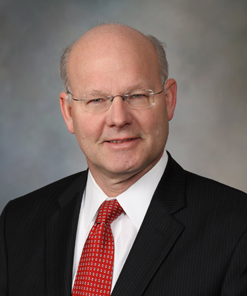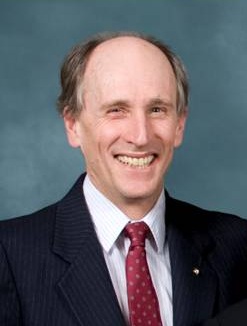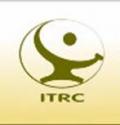Keynote Speakers
Kevin E. Bennet
Chairman, Division of Engineering, Mayo Clinic
"Next Generation Deep Brain Stimulation: Collaborative Engineering Solutions"
Tuesday, May 7, 2013
 Mr. Kevin E. Bennet is the Chairman of the Division of Engineering of the Mayo Clinic of Rochester, Minnesota, Assistant Professor of Neurosurgery and co-Director of the Neural Engineering Laboratory of Neurologic Surgery. His division, composed of 64 technical staff, is responsible for the development and application of new technology for clinical practice and research. Major development efforts include deep brain stimulation, wireless physiological monitoring and minimally invasive surgery.
Mr. Kevin E. Bennet is the Chairman of the Division of Engineering of the Mayo Clinic of Rochester, Minnesota, Assistant Professor of Neurosurgery and co-Director of the Neural Engineering Laboratory of Neurologic Surgery. His division, composed of 64 technical staff, is responsible for the development and application of new technology for clinical practice and research. Major development efforts include deep brain stimulation, wireless physiological monitoring and minimally invasive surgery.
Mr. Bennet joined the Mayo Clinic in 1990 with current and past appointments as Chair of Strategic Alliances, Vice Chair of Information Technology Standards & Architecture Subcommittee, Clinical Practice Committee Equipment Subcommittee, Information Technology Coordinating Executive Committee, Pharmacy and Therapeutics Committee, Medical/Industry Relations Committee as well as chair and membership in various workgroups and taskforces. He has also served as a reviewer of Mayo Clinic Proceedings and the NIH Small Business Innovation Research program.
He has over 30 years of experience in technology development with organizations including W.R. Grace & Co., Exxon International and Amoco Chemicals. He has been a consultant to the National Institutes of Health and served on NIH site visit teams. He holds patents concerning semiconductor and optical technology has founded several technology-based companies.
Mr. Bennet received a Bachelor of Science degree in Chemical Engineering from the Massachusetts Institute of Technology and a Masters of Business Administration from Harvard Business School.
Susan C. Hagness
University of Wisconsin-Madison
"Microwave Breast Imaging: A New Mammography?"
Tuesday, May 7, 2013
 Susan C. Hagness received the Ph.D. degree in electrical engineering from Northwestern University in 1998. Since August 1998, she has been with the Department of Electrical and Computer Engineering at the University of Wisconsin-Madison, where she currently holds the title of Philip D. Reed Professor. She is also a Faculty Affiliate of the Department of Biomedical Engineering and a member of the Imaging and Radiation Sciences Program within the UW Carbone Cancer Center.
Susan C. Hagness received the Ph.D. degree in electrical engineering from Northwestern University in 1998. Since August 1998, she has been with the Department of Electrical and Computer Engineering at the University of Wisconsin-Madison, where she currently holds the title of Philip D. Reed Professor. She is also a Faculty Affiliate of the Department of Biomedical Engineering and a member of the Imaging and Radiation Sciences Program within the UW Carbone Cancer Center.
Dr. Hagness’s theoretical and experimental contributions to the field of microwave breast imaging span a wide array of topics, including imaging algorithms, computational electromagnetics modeling, numerical breast phantom development, ultrawideband and multi-band antenna design, experimental prototype development, physical breast phantom design, dielectric spectroscopy, and development of microwave contrast agents.
She was the recipient of the Presidential Early Career Award for Scientists and Engineers presented by the White House in 2000. In 2002, she was named one of the 100 top young innovators in science and engineering in the world by the MIT Technology Review magazine. She received the 2004 IEEE Engineering in Medicine and Biology Society Early Career Achievement Award, the International Union of Radio Science (URSI) Isaac Koga Gold Medal, the 2007 IEEE Transactions on Biomedical Engineering Outstanding Paper Award, the 2007 IEEE Education Society’s Mac E. Van Valkenburg Early Career Teaching Award, and the 2011 Physics in Medicine and Biology Citations Prize. She became a Fellow of the IEEE in 2009. She served as the Technical Program Chair of the 2012 IEEE International Symposium on Antennas and Propagation and USNC/URSI National Radio Science Meeting in Chicago, IL.
Dylan F. Williams
National Institute of Standards and Technology
Recipient of 2013 IEEE Joseph F. Keithley Award in Instrumentation and Measurement
"Vector Network Analysis in Printed Transmission Lines"
Wednesday, May 8, 2013 Dylan F. Williams (M’80-SM’90-F'02) received a Ph.D. in Electrical Engineering from the University of California, Berkeley in 1986. He joined the Electromagnetic Fields Division of the National Institute of Standards and Technology in 1989.
Dylan F. Williams (M’80-SM’90-F'02) received a Ph.D. in Electrical Engineering from the University of California, Berkeley in 1986. He joined the Electromagnetic Fields Division of the National Institute of Standards and Technology in 1989.
Dylan pioneered the development of methods for determining the characteristic impedance of printed transmission lines and accurate on-wafer scattering-parameter calibrations. These are still recognized as the calibrations of reference today. Later work led to ways of verifying the accuracy of common industry-developed calibrations and the development of multiport and multi-mode calibrations in printed transmission lines.
Dylan later brought rigor to waveform measurements through the addition of mismatch corrections to electro-optic-sampling calibrations. These mismatch-corrected calibrations accounted for voltages, currents, and impedances, and now provide phase traceability for large-signal network analyzers. Dylan also pioneered the development of uncertainty analyses that included correlations and can be applied to waveform and other mixed temporal and frequency-domain measurement systems. More recently he has been working on extending electrical scattering-parameter measurements to terahertz frequencies in both rectangular waveguide and on-wafer transmission lines.
He has published over 80 technical papers and is a Fellow of the IEEE. He is the recipient of the Department of Commerce Bronze and Silver Medals, the Astin Measurement Science Award, two Electrical Engineering Laboratory's Outstanding Paper Awards, three Automatic RF Techniques Group (ARFTG) Best Paper Awards, the ARFTG Automated Measurements Technology Award, and the IEEE Morris E. Leeds Award. Dylan also served as Editor of the IEEE Transactions on Microwave Theory and Techniques from 2006 to 2010 and is currently the Executive Editor of the IEEE Transactions on Terahertz Science and Technology. Dylan is also the recipient of the 2013 IEEE Joseph F. Keithley Award in Instrumentation and Measurement.




